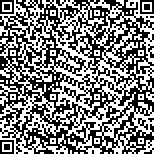本文已被:浏览 3513次 下载 4098次
投稿时间:2017-07-30
投稿时间:2017-07-30
中文摘要: “生物入侵”是指某种生物从外地自然传入或人为引种后成为野生状态,并对本地生态系统造成一定危害的现象。在缺乏天敌和其他制约因子存在的前提下,入侵种能够快速繁殖和扩增并对当地的生态环境、生物多样性和经济造成严重的损失。随着全球化进程的发展,生物入侵变得更加普遍并且危害更加严重,加强入侵种的治理至关重要。由于传统的物理和化学方法在入侵种防治中存在着一些难以解决的问题,开发和利用无污染、无公害的遗传调控技术在生物入侵种的综合治理方面就显得非常迫切。文章针对我国入侵害虫的现状、主要入侵方式及目前的防治措施进行了总结,同时对遗传调控技术及其在生物入侵种综合治理方面的应用进行了阐述,以期为我国生物入侵的科学治理提供参考。
Abstract:Biological invasion is defined as exotic species invading a new area naturally or artificially, thus bringing harm to the local ecological system. Since no natural enemies for the exotic species existed in the local ecological environment, population of the invasion species increases dramatically and destroys local ecological environment, biodiversity, and economy. Recently, frequency and hazard of biological invasion are increasing along with the globalization. However, the current controlling strategy for invasion species relies on physical and chemical methods largely, which brings severe pollution to the environment and living organisms. Therefore, developing of new method such as genetic regulation technique (GRT) of less labor-dependent and environmental friendly is urgently needed. Here we summarized the current situation of biological invasion in China and described the development of GRT method. It is our expectation that the information included in this paper will offer a general view for future biological invasion management.
文章编号: 中图分类号: 文献标志码:
基金项目:国家自然科学基金国际(地区)合作与交流项目31420103918
| 作者 | 单位 |
| 李芝倩 | 中国科学院上海生命科学研究院 上海 200032 |
| 陈凯 | 中国科学院上海生命科学研究院 上海 200032 |
| 杨芳颖 | 中国科学院上海生命科学研究院 上海 200032 |
| 黄勇平 | 中国科学院上海生命科学研究院 上海 200032 |
引用文本:
李芝倩,陈凯,杨芳颖,黄勇平.适用于入侵害虫治理的遗传调控技术[J].中国科学院院刊,2017,32(8):836-844.
Li Zhiqian,Chen Kai,Yang Fangying,Huang Yongping.Application of genetic regulation technique for invasive pest management[J].Bulletin of Chinese Academy of Sciences,2017,32(8):836-844.
李芝倩,陈凯,杨芳颖,黄勇平.适用于入侵害虫治理的遗传调控技术[J].中国科学院院刊,2017,32(8):836-844.
Li Zhiqian,Chen Kai,Yang Fangying,Huang Yongping.Application of genetic regulation technique for invasive pest management[J].Bulletin of Chinese Academy of Sciences,2017,32(8):836-844.


